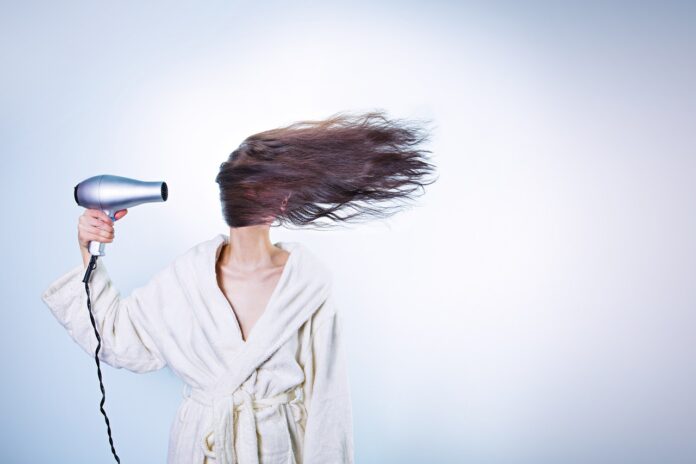Introduction
Have you ever looked at a celebrity’s hair and thought “Wow, their hair looks so smooth and shiny! I wish mine was like that!”? Well, don’t worry! There are some simple steps and frizzy hair products you can take to tame your frizzy locks. Follow these tips and let me know how they worked for you:
Wash your hair less frequently.
If you’re someone who washes their hair daily, try cutting back to every other day. Washing too often strips the hair of natural oils, leaving it dry and frizzy. Shampooing less frequently can make your tresses appear more shiny and healthy looking. If this doesn’t work for you, consider switching to a sulfate-free shampoo or one that has less harsh ingredients like silicone or alcohol (the latter can cause buildup). There are also plenty of affordable options in the drugstore aisle that won’t leave your strands feeling rough or dry after use!
Bonus points for shampooing with cold water.
One of the things that can help reduce frizz is using a cold water rinse. Hot water opens up the cuticle, which means it’s easier for moisture to escape and hair will dry faster. Heating your shower may be good for your skin, but it’s not so great for your hair. A cold rinse helps close off those cuticles and lock in moisture, which means less breakage and split ends as well as fewer flyaways. Plus—and yes, I’m going to say this one more time—it reduces frizz!
And if you’re concerned about turning into Bruce Banner after getting out of a hot shower (or maybe just not wanting to waste all that extra energy heating up cold water), don’t worry: You can also use cool or lukewarm water when rinsing out conditioner or shampooing with another product like leave-in conditioner or detangler spray.
Use moisturizing shampoos and conditioners.
A shampoo that is designed to moisturize and repair your hair is a must.
Conditioners are also important, especially if you have curly or frizzy hair.
You should avoid using products that are too harsh or dry on your hair; these can damage it and make it even more prone to frizzing up later. You should also avoid products that are too greasy or leave your hair feeling heavy—this can make it look greasy or flat instead of shiny and healthy-looking.
Use a leave-in conditioner.
After you’ve shampooed, conditioner is the next step. But what if your hair is already frizzy?
- You can use a leave-in conditioner on dry hair. It’s a lightweight moisturizer that helps smooth out the cuticle of your hair, which is the outer layer that causes frizz.
- Leave-in conditioners also help protect your tresses from heat damage like blow drying and flat ironing. This kind of protection helps keep split ends at bay as well. Interweaves recommends using this type of product on both wet and dry hair for the best results (but don’t forget about its benefits when used with a wet head).
Beware of hot tools.
- Use a heat protectant spray.
- Use a lower heat setting on your blow dryer, flat iron, or curling iron.
- Skip the blowout entirely and just let your hair air-dry.
Avoid blow-drying your hair at all costs (when possible).
You may have heard that dryers are bad for your hair. This is true, but it’s especially true when you’re trying to tame frizz. Blow-drying your hair can make it worse, so try not to do this as often as possible. If you must use a blow dryer, however:
- Use a diffuser instead of the hot air setting on your dryer. Just make sure you don’t hold the dryer too close to your head because that will just create more frizz and heat damage in the long run.
- Use a heat protectant spray before drying your hair if possible (this is especially good for those who use flat irons). It will protect against any damage caused by heating tools like irons and curling wands used after the shower or bathtub session with shampooing/conditioning products if they have been used before going into another room where they’ll need their own set of tools while still wet after applying product onto damp strands rather than wet strands themselves – which should never be brushed out until completely dry anyway!
Miracle leave-in sprays do exist, use them liberally.
For those who have fine hair, frizz can be a real problem. While it’s possible to get rid of frizzy hair with the right products, you also have to understand what causes your strands to go out of control.
Frizz happens when hair is dry. The reason for this is that there’s no moisture in the air around us—it’s dry because we’re breathing it out! To combat this problem, use a leave-in spray after you shower and before you blow dry your hair. A good leave-in spray will smooth out any rough patches and help keep your tresses looking healthy and shiny.
The best leave-in sprays contain silicone which helps prevent frizz by coating each strand with a thin layer of oil (you may notice this effect if you rub your fingers through wet hair). Silicone also adds weight to fine strands so they don’t fly away from each other when exposed to extreme weather conditions like wind or heat from an oven or hairdryer!
When combing wet hair, always apply a detangling spray and do it while the hair dryer is on.
To prevent breakage or hair loss, never comb wet hair. Instead, use a detangle spray and do it while the hair dryer is on. Another great trick is to use a paddle brush or wide toothcomb because these tools get through tangles much more easily than regular combs.
Always use a low heat setting when blow-drying or styling your hair.
When blow-drying your hair, always use a low heat setting. If you have naturally curly or frizzy hair, this will help to prevent breakage and damage by keeping the temperature gentle on your strands.
In addition to using a low heat setting when styling, it’s also important to apply styling products that work well with your specific curl pattern. If you have curly or thick hair with lots of volumes, choose a product that will give body and hold onto those curls as they dry—ideally one that won’t weigh them down too much either! Alternatively, if you have fine frizzy strands then look for serums instead; these will provide shine without weighing down each strand too much so it doesn’t look flat after application (which may happen when using gels).
When blow drying make sure not to brush through too vigorously as this can cause breakage from pulling out already damaged hairs from behind the head where they’re hard-to-reach
Try not to brush your hair too much when it’s dry. Instead, try using a styling cream or gel to pull the frizz back and keep things in place.
The best way to prevent frizz is to try not to brush your hair too much, whether it’s wet or dry. Brushing only does more damage and creates more frizz. Instead, try using a styling cream or gel to pull the frizz back and keep things in place.
When you’re trying to tame your curly-frizzy mane, remember these three tips:
- Don’t use too much styling product on wet hair—you’ll just weigh down your locks and make them look greasy. Skip the hairspray for this one—the less stuff you put in there, the better!
- Keep a wide-toothed comb handy for when things get especially crazy after a shower or bath (or when you’re just feeling like making some big changes). This will help keep tangles at bay while separating strands so they don’t clump together into giant knots that are impossible to untangle later on down the road…and trust me: nobody wants those!
- Be sure not to brush through dry curls; instead, give yourself plenty of time between showers so that moisture can soak into each strand before being separated again later on down the road…”
Frizzy hair can be a pain but it can also be good if you take care of it in the right way
Here are some tips for caring for frizzy hair:
- Use the right products. Products that contain silicone coat and flatten the hair, eliminating frizz. They also help to keep your hair shiny and smooth all day long.
- Use heat-activated serums and treatments. These products do not contain silicone, so they won’t make your hair look dull or greasy, but they will keep it healthy by adding moisture back into it—and keeping it from drying out! If you have thick curly hair, use a gel or mousse before blow-drying to give yourself more control over how you style your locks; if you have thin straight locks like me, I’d recommend using a leave-in conditioner after washing your tresses (but before styling).
Conclusion
You can take care of your frizzy hair and make it less frizzy with these seven tips. If you want to reduce your frizz, use a moisturizing shampoo and conditioner, try not to wash your hair too often, and use a leave-in conditioner if possible. You should also avoid blow drying as much as possible and always apply a detangler spray before combing wet hair while blow drying with the heat on low setting.











